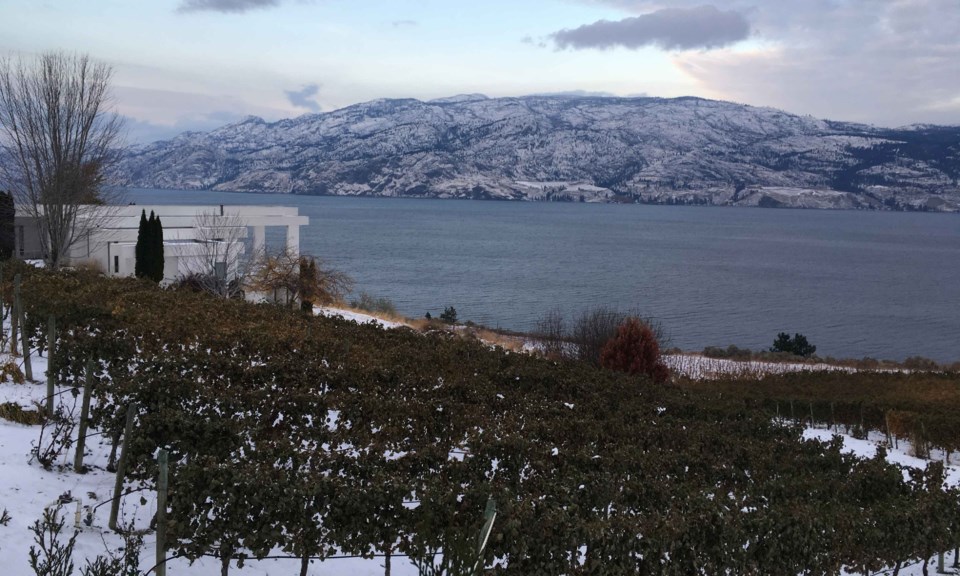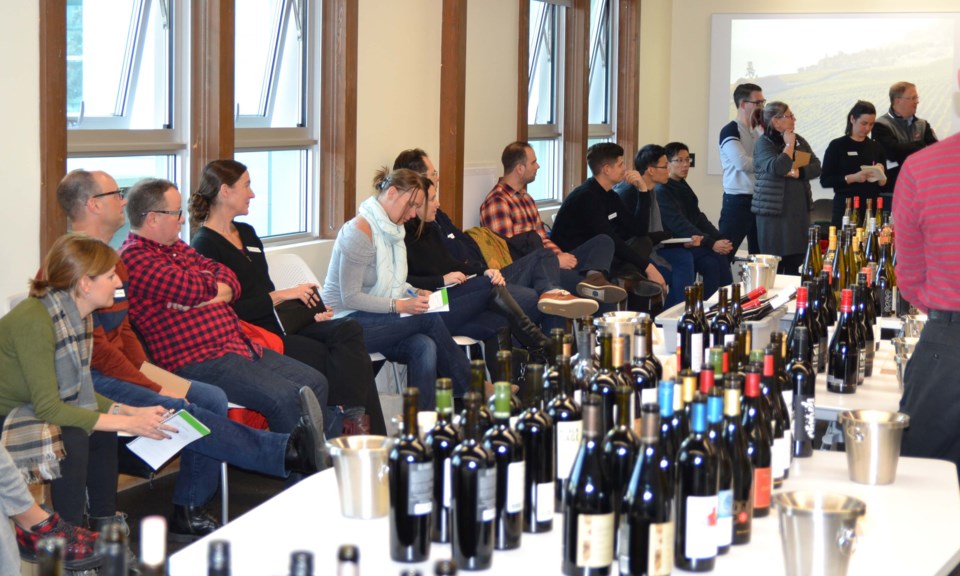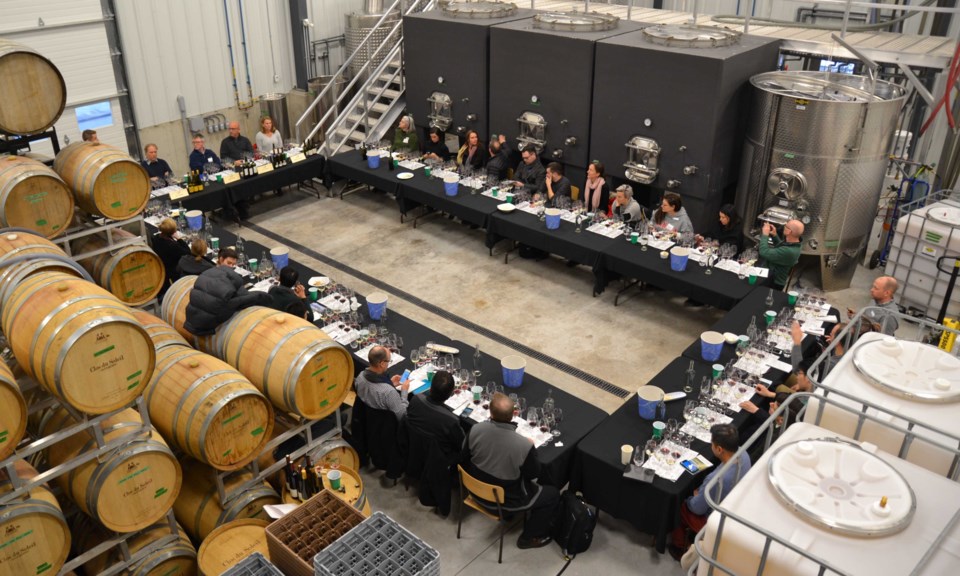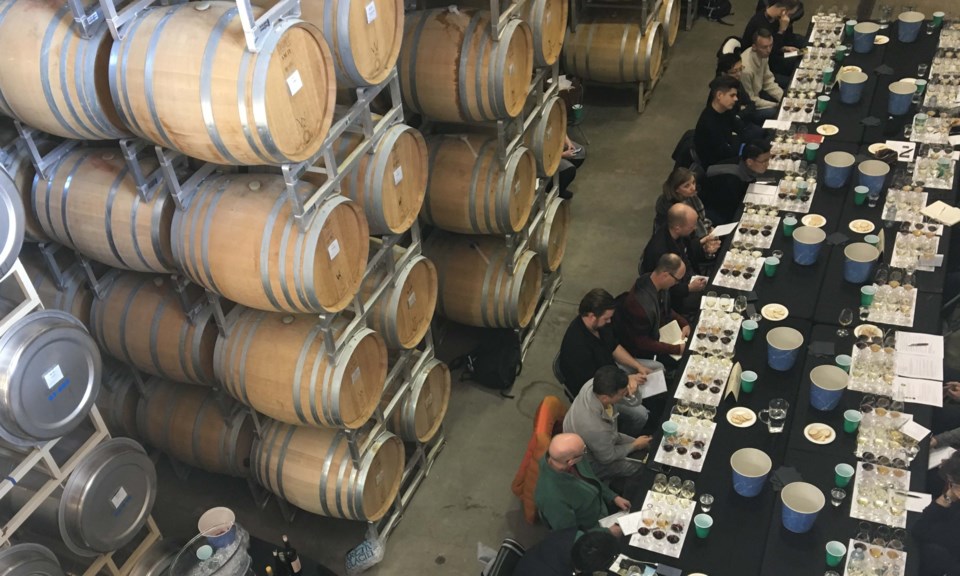On Nov. 5 I touched down at Kelowna airport to a winter wonderland. Until then, I had never seen the Okanagan Valley in the snow.
As soon as the icy air hit my face, I started thinking about the international guests I was about to meet. Would this frosty scene simply fuel the stereotype that Canada is only capable of making icewine?
I had nothing to fear. The B.C. Wine Institute carefully orchestrated a three-day program that was designed to delve far deeper into B.C. wine than I ever had myself.
Dubbed , this inaugural event included 30 wine professionals from across Canada and around the globe.

“The goal was to give some top somms and wine influencers an in-depth look at the exciting things that are happening in the B.C. wine industry,” said Cawston-based master of wine Rhys Pender, who co-hosted a series of seminars with Toronto-based master sommelier John Szabo. Activities included a tutorial on soils, a blending session, a blind tasting of B.C. wines against international counterparts and a showing of older vintages.
Pender kicked off with an overview of B.C.'s regions and sub-regions, introducing some of our most planted grapes. When we got to the third wine, Gray Monk's aromatic and off-dry Gewürztraminer, Jasper Sun, director of wine at the Jing An Shangri-la in West Shanghai, piped up: “This is exactly the style of wine we need with our food.”
The diversity and overall quality in B.C. was the biggest surprise for the international delegation.
“It is dynamic, experimental, exciting, with huge potential,” commented Szabolcs Menesi, head sommelier at the Island Shangri-La, Hong Kong. “I loved the way how the wines had the soul of the terroir.”
Riesling, Cabernet Franc and Syrah seemed to be the favourite varieties across the board.
“The quality of Syrah grown and produced in the Okanagan and Similkameen valleys stands alongside some of Washington state’s best,” enthused Washington wine writer Eric Degerman, president and CEO of Great Northwest Wine.

There was equal appreciation for our bubbles, with Menesi referencing Ann Sperling's and Degerman giving a nod to Bella Wines and the team at Okanagan Crush Pad.
For Caroline Brangé, sales rep for Flint Wines import company in the U.K., it was the Similkameen Valley that stood out. “The wines were showing more precision, complexity and depth,” she said.
Sommelier Jon Kleeman also noted a distinctiveness to these wines. He has experience pouring B.C. wine by the glass at London's Social Eating House restaurant.
“In our market, the wines will work well as great value premium wines,” he said.
Menesi who previously worked in the U.K., agrees that the adventurous consumers there are ready for our wines. But "to fit B.C. wines into the Hong Kong market is not an easy task,” he added, noting that Burgundy and Bordeaux are still very much the focus.

Nevertheless, he sees hope in the new generation.
“I am always very happy to make people discover fantastic wines that they have never tried or heard of before, like B.C. wines,” he said.
Closer to home, Degerman believes that trade and consumers in Washington and Oregon are fascinated by British Columbia wines.
“Unfortunately, the political boundary makes it difficult to folks to buy them,” he lamented.
Brangé also questions our local producers' willingness to export. “I understand the winemakers position: Why sell abroad for cheaper when I can sell out from my cellar door?”
Beyond Martin’s Lane, which her company imports, she has only come across Le Vieux Pin and Tantalus in the U.K. “We need more, please please please!” she begged.
For B.C. wine, new frontiers await.



